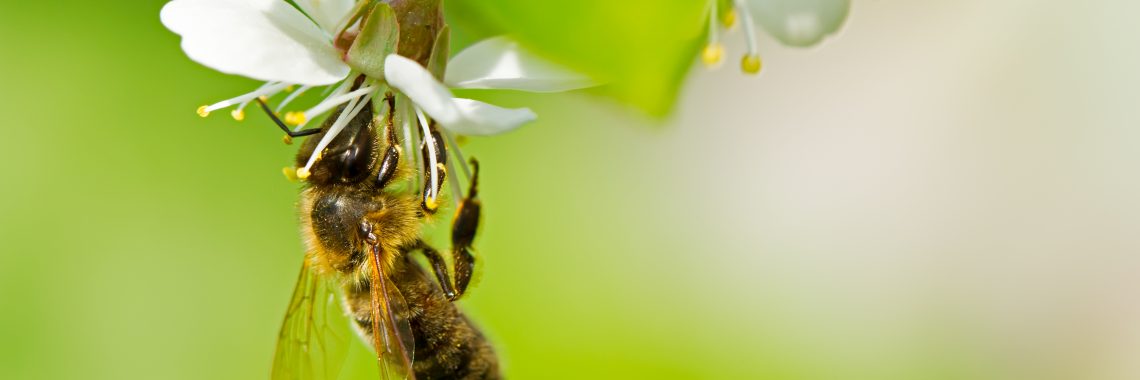I want to make the case that all Wyoming farmers and ranchers can benefit by promoting pollinators. Creating, enhancing and protecting habitat that provides flowers during the growing season can promote pollinators, increase crop yields, reduce pest insect populations and add value to your land.
Pollinators Increase Yields
To ensure profitable yields, human-managed pollinators – usually honey bees and alfalfa leafcutter bees – are brought in to provide pollination services. Dry beans, though they have self-fertile flowers, show increased yield when wild pollinators, such as bumble bees, visit the flowers and “trip” them.
Livestock producers rely on the production of grass, a wind-pollinated “crop,” and may not think there would be any advantage to maintaining a diversity of flowering plants as part of their range management. Even grassland, however, can benefit from flowering plants in the plant community.
Pollinators Reduce Pests
Evidence for this can be seen in pure stands of crested or intermediate wheatgrass. These pastures can become heavily infested with black grass bugs, a native insect that sucks the cell contents out of grass leaves, stunting the plants and reducing the nutritional value of the forage. Black grass bug populations are rarely noticeable on native prairie where flowering plants help support populations of their many predators and parasitoids.
Many of the same plants that benefit pollinators also promote increased populations of beneficial insect species. These beneficial insects, the many predators or parasitoids of crop pest insects, can help control pests in crops that don’t need insect pollination. While the juvenile forms of many of these beneficial insects prey upon pests, their adult forms use nectar and pollen from flowers to survive and reproduce.
Examples of these insects are green and brown lacewings, many tachinid fly species and a multitude of parasitoid wasp species. Parasitoid wasps seek out pest insect adults, immatures and even their eggs, as places to lay their eggs. These eggs hatch and eventually kill the pest insect. The parasitoid wasps in the genus Bathyplectes attack alfalfa weevils and are an example of an important beneficial species that feeds on flower nectar as adults.
Pollinators Need a Hand
One way to promote pollinator populations, and wildlife in general, is to ensure they have healthy habitats that provide everything they need throughout their life cycles.
Pollinator conservation seed mixes are available to add flowering plants and boost pollination. I would recommend you check any wild mix you are considering with your county’s weed and pest district to make sure it doesn’t contain plant species that can become invasive in your region.
For enhancing pollinator and beneficial insect habitats on eligible land, the USDA Natural Resources Conservation Service (NRCS) provides technical assistance through its Conservation Stewardship Program program. This and the Environmental Quality Incentives Program also provide financial incentives to maintain pollinator enhancements.
The quickest way to find out if funding is available for enhancing your land is to contact your local field office. Use this link to find an NRCS office: bit.ly/nrcsfinder
Pollinators Add Value to Your Land
The decline of many kinds of pollinators in the United States and around the world has been well documented, and the problem has the potential to impact food production. Most people in the agricultural industry care about the long-term sustainability of agricultural production, especially those who want to pass on productive land to the next generation. To learn more about how to enhance pollinator habitats, check out the following resources.
Resources
UW Extension “Promoting Pollinators on Your Place, A Wyoming Guide” provides information on ornamental plant species, habitats favored by pollinators and an excellent section on getting started with beekeeping: bit.ly/yourplacepollinators
Pollinator Guide resources from Barnyards & Backyards magazine: bit.ly/BBpollinatorguide
Issue of “Rangelands Journal” devoted to pollinators in rangelands: bit.ly/rangepollinators
USDA Natural Resources Conservation Service (NRCS) website with pollinator information: bit.ly/nrcspollinators
Western SARE “Habitat Plantings and Restoration for Pollinators and Beneficial Insects” factsheet offers guidance and other resources for planning pollinator plantings: bit.ly/restore4pollinators
Originally published spring 2018.





